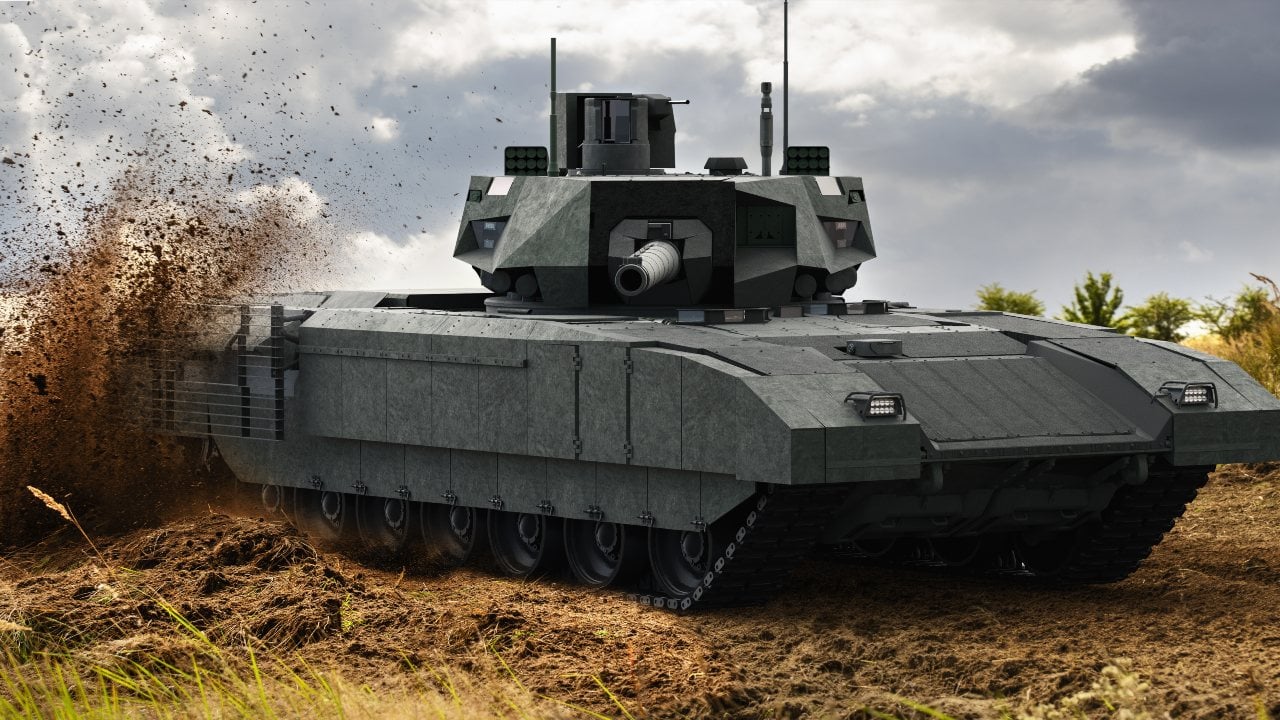Russia's T-95 Tank: The Revolutionary Battle Tank That Never Was
The T-95, an experimental fourth-generation main battle tank developed by Russia's Uralvagonzavod, was poised to revolutionize armored warfare with advanced features and formidable firepower before its cancellation in 2010.
Summary: The T-95, an experimental fourth-generation main battle tank developed by Russia's Uralvagonzavod, was poised to revolutionize armored warfare with advanced features and formidable firepower before its cancellation in 2010. Planned to be equipped with a 152 mm smoothbore main gun capable of launching guided missiles and firing high-explosive rounds, the T-95 would have surpassed the firepower of contemporary Western tanks like the M1A2 Abrams. Additional features included a remote-control fire system with an autoloader and advanced sighting systems for enhanced combat awareness. However, due to financial constraints and strategic shifts, Russia terminated the T-95 program, opting instead to develop the T-14 Armata.

T-95: Why Did This Tank Never Role?
From modern armored vehicles to World War II-era relics, all of Russia’s tanks have fared poorly against Ukraine’s Western-delivered munitions.
And while Moscow’s T-72, T-80, and T-55 main battle tanks struggle along the frontlines, Russia might be wishing it could call on one of the best tanks it never did build: the T-95.
Introducing the T-95
The experimental T-95 (or Object 195) fourth-generation MBT entered the development phase at Uralvagonzavod right before the Soviet Union’s collapse in the late 1980s. Russia then halted the program due to budgetary constraints. However, a prototype tank was announced by Russian Minister of Defense Igor Sergeyev in 2000. Ten years later, the T-95 program was canceled outright. The Kremlin never said why.
Planned Specs & Capabilities
Before the T-95’s termination, details regarding its planned specs and capabilities abounded. Engineers expected to equip the MBT with a 152 mm smoothbore main gun that would have been larger and more powerful than the main guns of the American-made M1A2 Abrams and its allied tanks in Europe.
In addition to firing high explosive rounds, this powerhouse of a gun would have been able to launch guided missiles.
The turret would have had a remote-control fire system and autoloader, allowing the crew to stay deeper in the vehicle for better survivability. The turret would have been positioned at a higher angle, allowing the gun better elevation for firing at taller structures in urban combat situations.
According to Russian outlets, the T-95 would have been equipped with a diesel engine able to provide roughly 1,500 horsepower. The engines of the preceding T-72 and T-80 MBTs were significantly less powerful. The T-95 would have had a unique new electro-optical sight, a ground radar, and next-generation thermals.

With these assets, the tank would detect movement of enemy combatants any time of the day or night.
What about the T-14 Armata?
Instead of continuing to pursue production of the T-95, Russian officials opted to go with a whole new tank concept – the T-14 Armata. While the Kremlin often boasts that this modern MBT is more capable than its near-peers, the Armata has run into some of the same issues that halted the progress of the T-95.
With Moscow’s financial condition worsening after its invasion of Ukraine and the subsequent imposition of economic sanctions, the T-14 does not have the funds needed for serial production.
About the Author: Maya Carlin
Maya Carlin, National Security Writer with The National Interest, is an analyst with the Center for Security Policy and a former Anna Sobol Levy Fellow at IDC Herzliya in Israel. She has by-lines in many publications, including The National Interest, Jerusalem Post, and Times of Israel. You can follow her on Twitter: @MayaCarlin.
All images are from Shutterstock.


